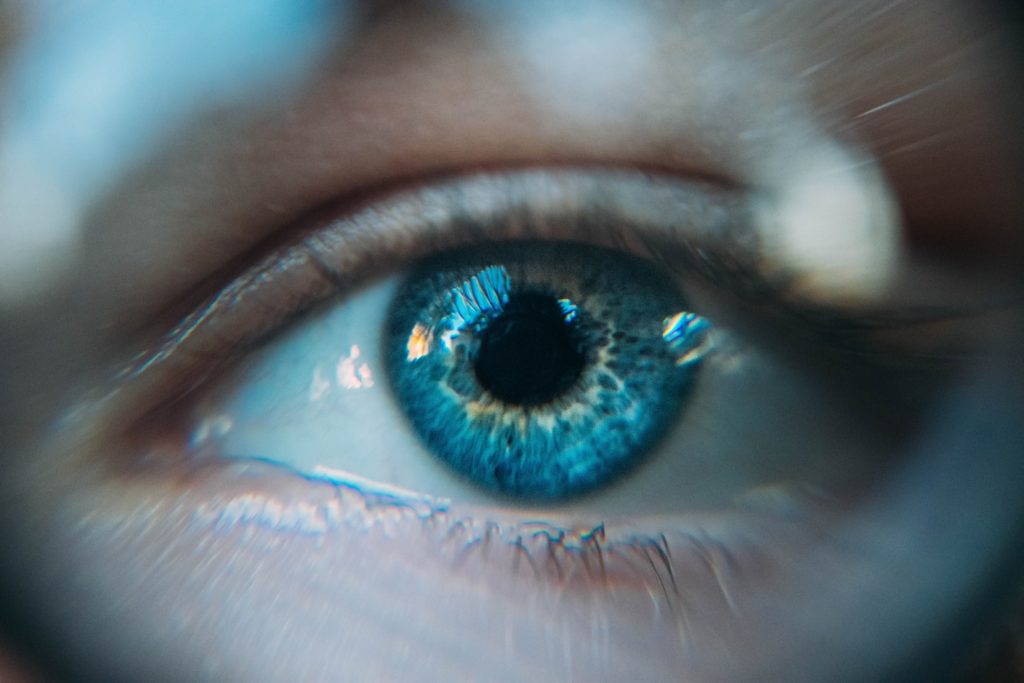כיצד לקבל הבנה טובה יותר של התנהגות הקונים באמצעות מעקב עיניים
Buyer behavior is at the root of many informed business decisions – and it’s becoming harder and harder to understand why people buy and what is behind every purchasing decision.
If you’re one of the companies in the constant pursuit of understanding how customers act and think before buying, forget about guesswork and intuition – you will need accurate data about the shopper’s habits.
Today’s buyer is savvy and often unpredictable. There are a few key moments to try to observe buyer’s behavior, whether online, before buying, at the moment of purchase, or post-purchase.
In this article, we will reveal how you can understand the way shoppers think at the moment of purchase. Everybody is different, but there are patterns that you can identify in their behavior, which can help you optimize their purchase journey.
Read on if you want to gather better data that powers observation, analysis, and buyer behavior understanding through 3D eye tracking.
First of all, What Is Buyer Behavior?
Buyer behavior offers much more information nowadays than it used to do when it was only about helping businesses understand purchase, use, and disposal of goods or services. It has since developed into much more than that. It examines the consumer shopping habits from their first contact with a company until the final purchase and even post-purchase. It includes the buyer’s emotional, mental, and behavioral responses when engaging with a company or brand. And it blends notions and elements from psychology, sociology, anthropology, marketing, economics, and behavioral economics.
Why Is It Important to Understand Shoppers?
When developing the marketing mix for your product, it is essential to know the perceptions, attitudes, and actions people have and take when buying your products.
Once marketers discover how customers behave, they can make informed marketing decisions. The study of buyer behavior influences all promotions, product launches, advertising activities.
Let’s dig a little deeper into what influences buyers’ shopping behavior.
What Influences Purchase Behavior?
The first thing you should know about buyer behavior is that internal and external factors influence how shoppers behave.
ה internal factors deal with variables like the consumer’s personality, perception, values, and self-image. For example, a country manager of a top financial company might buy an expensive car because it fits their self-image. Sales reps and marketing managers need to analyze these variables when developing marketing campaigns for their products.
ה external factors divide into:
- Cultural & social factors: consumers tend to imitate other people they admire or take their opinion into account
- Point of purchase factors: the shopper’s behavior is affected by aspects such as the way a product feels and looks, its packaging, the store’s layout, product placement, and planograms, advertising and promotions, client service, background music, and others.
To determine how to optimize the external factors that influence buyer behavior – and increase sales or improve the customer experience – it is necessary to analyze shopper behavior to determine what produces the best results for a specific product and within a particular store.
Where Can You Analyze Buyer Shopping Behavior?
Omnichannel is the word of the day. In other words, by observing shopper behavior online and offline. When consumers want to find out more about or buy a product, they take a sequence of steps. When in the online environment, you can analyze these steps when looking at what website they came from, what pages they browsed, what products the person clicked on, how much time the shopper spent on particular pages, and when and how they made the purchase.
That is why marketing managers, research agencies, and retailers analyze how shoppers interact with their brands and products through these channels holistically.
The following paragraphs will discuss buyer behavior analysis solutions and tools for retail shops. We will continue by sharing examples and tools that retail shop managers use to understand shopper behavior at the offline point of purchase.
How Can You Measure and Analyze Buyer Shopping Behavior In-store?
When it comes to observing consumer shopping behavior in the store environment, most retailers use solutions like:
- Modern POS: some modern point of sales systems are created not only for selling different items but also for generating reports and metrics like customer counts, sales trends, profit margins, and more
- Foot traffic analytics solutions: these come in the form of people counters and beacons – helping retailers make deductions about how good a navigation system or a store design is
- Smart carts with location beacons
- The store’s Wi-Fi network: to see how many shoppers come into the store and what areas they visited
- Visual systems (camera systems, optical 3D sensors)
Going from Rational Shopper Data to Emotional Shopper Behavior
Counting the number of people entering a store, identifying demographics like age and gender, or tracking the movement of people within a store are all critical for your brand and shop.
However, you also need tools that measure the emotional state of your consumers. People make a lot of emotional or instinctive decisions.
As we have stated in the early stages of the article, analyzing shopper behavior means dealing with internal human decision factors, like values, self-image, and perception.
To understand how a buyer perceives your product, you need to analyze his reactions while engaging with the product.
A new and early adopted way of observing, measuring, and analyzing buyer behavior, comes in the form of AI-based technology that relies on face detection and eye tracking.
3D eye tracking technology is one of these AI-based technologies that enable you to do shopper behavior research while ensuring privacy remains a priority.
This technology will help you get answers, in real-time, to questions like:
- Did the buyers see my product?
- If they saw it, did they consider it, or did they glance at it?
- How many times did they look at the product?
- Did they see the competition’s product as well? If yes, did they compare the two products? How much time did they spend looking at my product vs. the competition’s product?
Analyzing this type of buyer behavior and attention gives you access to real-time insights and trends that help you make data-driven decisions.
Using 3D Eye Tracking to Measure Buyer Visual Behavior
Marketing managers use eye tracking both on and offline to study how shoppers interact with products or spaces and understand what products, promotions, and designs capture their attention.
Marketers analyze shopper behavior through eye tracking because our eyes are the primary way we engage with the marketplace.
So far, eye-tracking meant special glasses or headsets. These are given to customers or mystery shoppers to wear during the shopping process.
However, eye tracking through traditional glasses can bias shopper behavior, as the subject is aware that his actions are recorded and analyzed. Because the consumer knows their actions are being recorded, the actions won’t be as authentic and raw as you would want them to be. Knowing they are supervised, the buyer’s actions are involuntarily, somewhat overthought, and altered by post-rationalization.
How 3D Eye Tracking Works
And this is where remote 3D eye tracking comes in, a new way of measuring attention in a nonintrusive, anonymous form, capturing the authentic and unaltered shopper behavior – how they naturally act at the shelf.
At Eyeware, we took market research and eye-tracking a step further. We created a way to collect data on shopper attention using 3D eye-tracking, which remotely tracks visual attention from as far as 1.3m (4.3 ft) away.
This means:
- No glasses – it is a nonintrusive method
- No VR headset – the shopper is not burdened by any heavy objects during a shopping
- No personal approach with the shopper – it is all anonymous and GDPR friendly
You can track multiple subjects, label objects of interest (shelves, displays, or other merchandising items) in the open space, and track attention towards them in real-time. You can do this by using off-the-shelf 3D cameras and GazeSense. Gazesense is a 3D eye tracking software created to map your store or your point of analysis (shelf display, products, etc.).
By placing a discreet sensor on the shelf or point of sale, shopper attention data can be provided in real-time or stored for later analysis.
Having Access to the Unconscious Buying Behavior and Consumer Habits
Human decisions are not as rational as we would like them to be. The majority of human behavior begins at an unconscious level. These automatic processes, including behavioral mimicry, also impact attitudes, beliefs, and goals without engaging consumers’ conscious minds.
Consumer habits, a type of automaticity, are also behaviors affected by contextual stimuli, habits that happen independent from our intentions and control, to some level, and it is how consumers make brand decisions in the context of their daily lives. One study we created with a client revealed that shoppers were on autopilot. They typically spent under a minute in the aisle and grabbed a single product. Shoppers frequently bought whichever brand they saw first and did not necessarily find their brand. The main buying criterion was the first product that the client saw. Prolonged consideration was not that common.
The Type of Buyer Behaviour You Can Collect Through a 3D Eye Tracking Study
By using remote 3D eye tracking you can see how shoppers interact with products on the shelf.
How? By analyzing fixations, gaze points revisit, and other eye movement behaviors. This way, you will have insight into the shoppers’ buying behavior and be able to find out:
- What are the emotional responses buyers have throughout their shopping experience? Emotion is what drives purchasing behavior. People are not as logical as we might imagine – eye movements are raw, unaltered indicators of how people perceive a product
- How impulsive is the buyer?
- How do genders react to what you’re marketing?
- How do your displays or promotions perform?
- How many of your shoppers turn into buyers?
- Where are the choices on which shoppers spend the most significant amount of time?
- What captures shoppers’ attention at the shelf? Whether that’s from your display or your competition’s promo
- What is the difference between what buyers say and do during focus groups or surveys versus what they do in shops?
- Is it worth investing in special displays?
- Is your new packaging visible enough and desirable?
All of the above types of shopper insights can demystify their behavior and help you make data-driven decisions towards influencing their path to purchase.
Wrap Up: Trust the Buyer’s Words, but Most of All, Trust the Buyer’s Behavior
As we have seen, having access to what influences a consumer’s buying process gives brands more information about their products and their competitors. Companies can discover the attributes and features buyers value most when comparing two brands.
Our recommendation is to assess both the rational perceptions of potential buyers and buyers (by conducting traditional market research, such as focus groups) and the unconscious and unaltered perceptions and impulses. Having all this information at hand will help you discover which products and features provide the most significant return on investment.




